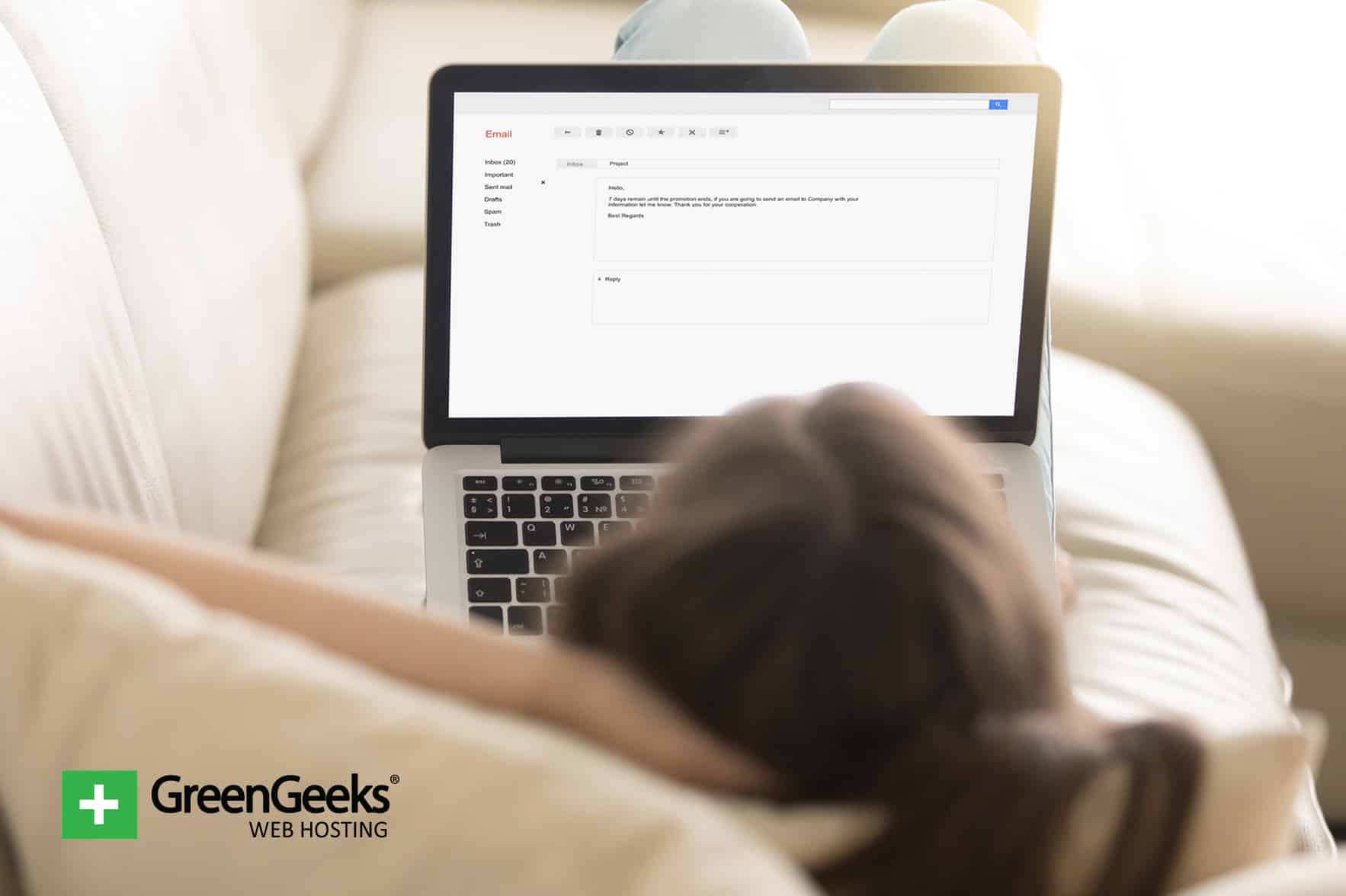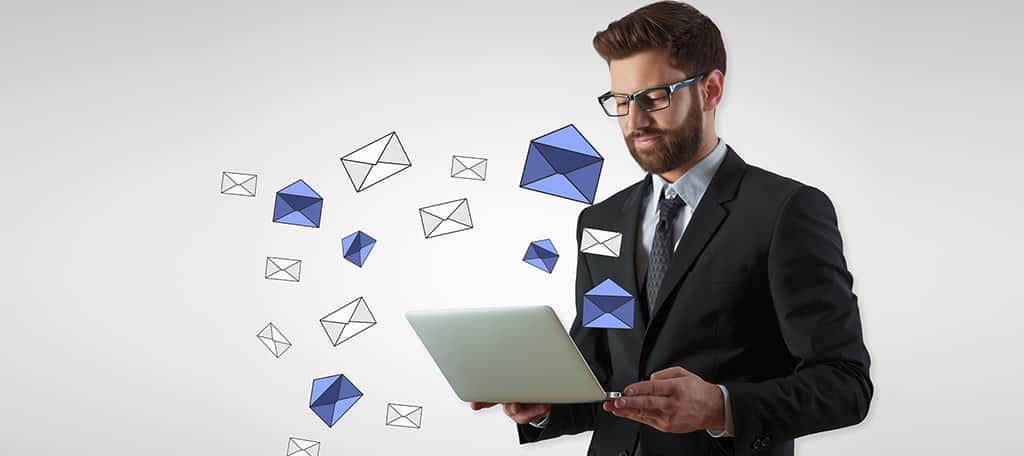
Email is still an effective tool for engaging customers. It remains one of the most popular forms of communication to this day. Unfortunately, not everyone creates stunning messages to connect with consumers. This is a lost opportunity to make more money than you might realize.
On average, a “welcome” email increases revenue by roughly 320% when compared to other promotional materials. Of course, this also depends on how the message was constructed to begin with.
In many instances, a plain text message that is not personalized doesn’t have the same effect as something more elaborate.
Here are seven lessons I’ve learned regarding how to create an email that is simply amazing. By putting in the effort to spruce up your message, you vastly improve chances of click-through rates, purchases and even peer-to-peer shares among friends and family.
1. Brand Your Email

Taking your basic text messages and making them more visually stunning engages a wider audience. For example, you can use your logo or even company colors to accentuate the email. This associates the message with the company and allows for a consistent flow of visual design.
Adding your logo also gives the email a sense of authenticity. I know; a lot of scammers have clued into this technique and are doing the same. However, this just proves my point of how valuable the logo is in your message.
Besides, you can avoid potential customers being scammed by including the other elements in this list.
One of the most important aspects to keep in mind is recognition in your email. In fact, simply using the same colors as your company increases recognition by as much as 80%. It’s the association between the email and the brand that is important.
What if you don’t have a logo or pre-defined color scheme for the business? You’re missing out on a good opportunity to engage the audience. Colors and imagery play a massive role for humans. But it doesn’t need to be exuberant. For example, about 95% of brands use one or two colors.
People associate an image with what they’ll expect. What do you think of when you see a black “swoosh” mark on a shoe? This same engagement can be achieved when placing the logo within an email.
The bottom line is logos and colors often lend to a message’s credibility. The more comfortable someone is with a piece of content, the more likely he or she will interact.
2. Personalize the Message

Personalizing a message goes a long way to engage recipients. In fact, there are several valid reasons why you would want to make sure each email is tailored to an individual.
In many cases, the difference between a legitimate and a scam email is at the very beginning of the message. The difference between, “Dear Customer” and “Dear Bob” is profound, especially if your name is Bob. Most scammers don’t know the customer name, which makes it difficult to fake.
For example, PayPal addresses every customer with his or her full name in an email. If it doesn’t have your name, it’s most likely a fake. This greatly reduces the risk to customers who are aware of this practice and prevents clicking on malware or other malicious links.
Another important reason to address people by name is making a deeper connection between buyer and seller. When you call someone out by name, it demonstrates you’re recognizing the individual as a real person. As a result, the level of trust goes up a notch or two.
Personalization is also important to improve click-through rates and conversions. In fact, three out of four marketers state how personalization increases engagement from customers. People are simply more likely to trust content that is focused on them.
Using someone’s name in a message is only part of the personalization process, though. Some email campaigns will include content the consumer likes or show ads for products he or she is watching.
3. Make it Mobile-Friendly

A large portion of the populace read emails from their smartphones. This means you need a campaign that caters to those using hand-held devices. In reality, about 70% of people will delete messages immediately if they do not render well from a mobile device.
Of course, making an email mobile-friendly takes more than just making sure people can read it on a smaller screen. You need to take into consideration bandwidth and processing power when developing content. Not everyone is on a fast 4G network or has a mobile device capable of rendering graphics quickly.
About 68% of people who have smartphones check them within the first 15 minutes of waking up. This morning routine involves scanning through social media, reading the news and checking email. If you time when messages are sent perfectly, you can further boost the engagement.
On average, people spend about 3.25 hours per day on their mobile devices. According to trends, the number of minutes is expected to rise to nearly three and a half hours. For some, it’s their primary access to the online world. This means you need to do what you can to engage mobile users whether it’s on your website or in an email.
The truth is, smartphone email users outnumber their desktop counterparts by nearly two-to-one. This doesn’t include those who use both systems on a daily basis. By ignoring the users who read messages or even view websites on mobile devices, you’re only hurting your business.
4. Integrate Social Media

Social media is one of the biggest reasons why people use the Internet in today’s society. Whether it’s checking Instagram posts of favorite celebrities or watching the latest video on YouTube, social media connects millions. Don’t forget to include your own profiles in email messages.
Consumers spend up to 40% more money with companies who engage with them on social media. Between improving income and brand reputation, investing in social media marketing is indeed vital today. Including links to your own social profiles in email messages only serves to boost your brand’s awareness on those platforms.
However, it takes more than a link to Twitter or an icon for YouTube to encourage clicking. You want social elements to be visible, but not too much that they take away from the content of the email.
Essentially, you need to devise a strategic plan to best use your social icons. While this may take a bit of trial and error, the end result is worth the effort.
Don’t forget to add elements from your social accounts for even further engagement. For instance, adding a hashtag you use frequently near your Twitter icon may inspire people to join the conversation. It makes them feel like they’re being invited to an exclusive gathering. In a sense, they are.
At any rate, some of the best email design examples at least include icons and links to social media accounts. While you don’t have to be too elaborate, just know you can improve follower rates by accentuating those sites in your content.
5. Optimize Image Use

I mentioned adding your logo and some color to email earlier, but what about actual imagery? A lot of companies will saturate a message with images galore, which has the potential to cause problems down the road. If you want to accentuate emails with graphics, you need to optimize the experience.
Excessive use of graphics often trips spam filters. As a result, the email is sent to the ether without the recipient actually seeing it. All your offers of discounts and benefits are for nothing if the message is instantly trapped and ignored.
Another issue heavy graphics cause is distortion of the content. Not everyone uses HTML for email. In fact, some who use software such as Outlook can set a trusted level to receive graphics. If the email is too photo-heavy, the text may be shifted down and improperly displayed for those who deny image downloads.
Speed is another aspect you’ll need to consider when adding images to email. The resolution of graphics may slow the interaction of someone reading a message, especially for someone on a mobile device.
Be logical when it comes to accentuating emails with graphics. While a small animated GIF, logo or designer headers may be OK, too much can easily take away from the experience. The last thing you want is a recipient getting frustrated because of image issues and deleting the message before reading it.
Take the time and find a good way to design emails when placing images. While some may improve engagement, too many may drive customers away.
6. Monitor Your Email Campaigns

You have access to a variety of email services to track campaigns, and the data these deliver is invaluable. By understanding your target audience, you can begin to form better strategies and discover what methods work best to drive interest and sales.
For instance, you can determine what kind of subject line is the most effective by tracking who opened what email. Correlating site traffic with email subject matter can demonstrate what the audience is finding the most appealing in a message. The possibilities are great when it comes to analyzing email data.
The statistics you receive from tracking email can lead to more engagement, higher sales and leads and greater opportunity for sharing across platforms. However, all of this insight is wasted if you don’t take the time to study the data.
How people interact with the email can also contribute to creating better content layouts. For example, do your social icons receive more clicks if they are above or below the main body of the message? Are people more likely to click a “buy now” button or a link to a specific product?
All of this information is for you to create the most engaging and effective email possible. There’s a great deal of strategy that goes into creating a perfect email for your company. Don’t assume simple text is going to be the best way to engage your audience. Use the data to figure out your course of action.
7. Adding a Call to Action

A call to action is used to inspire someone to do something. For instance, a button that states, “Buy Now” is telling the consumer to make a purchase. The call to action is not a new strategy, nor is it limited to the online world. In fact, people have been using call to actions since advertising was conceived.
It’s common knowledge that a call to action greatly influences whether someone makes a purchase or responds to an email. It’s why social media influencers use it within their content, and it’s why you need to include it in your email.
A call to action can be created in a number of ways. From a simple sentence to a large flashy button, the success of a CTA depends on what your audience is more likely to click. Coincidentally, information like this is accessible through monitoring your email campaigns I mentioned earlier.
You could include a sentence such as, “for more information, please visit our website.” Sentences like this are often quite effective. It tells people where they can receive more valuable information on a subject they already have an interest in.
Some of the best email designs usually include a CTA of some kind. It’s all about getting someone to perform an action for an expected result. You don’t want to trick someone into clicking a link, but you do want to talk them into it. Depending on the content, it’s often easier than it sounds.
Regardless of the industry, the call to action is part of many strategies to boost online sales. This is true whether it’s from an email or proudly displayed on a website. It’s perhaps one of the most important and key elements when doing business online in any form.
Don’t Rely on Basic Email Structure
Some of the best email design is rich and detailed while calling a person out by name. It appears more professional, is more visually engaging and improves the likelihood of boosting sales and return visits. Come up with your own creative email campaigns and give customers a reason to subscribe to your lists. It may prove to drive the future success of your business.
